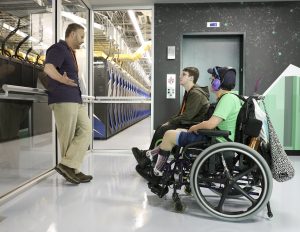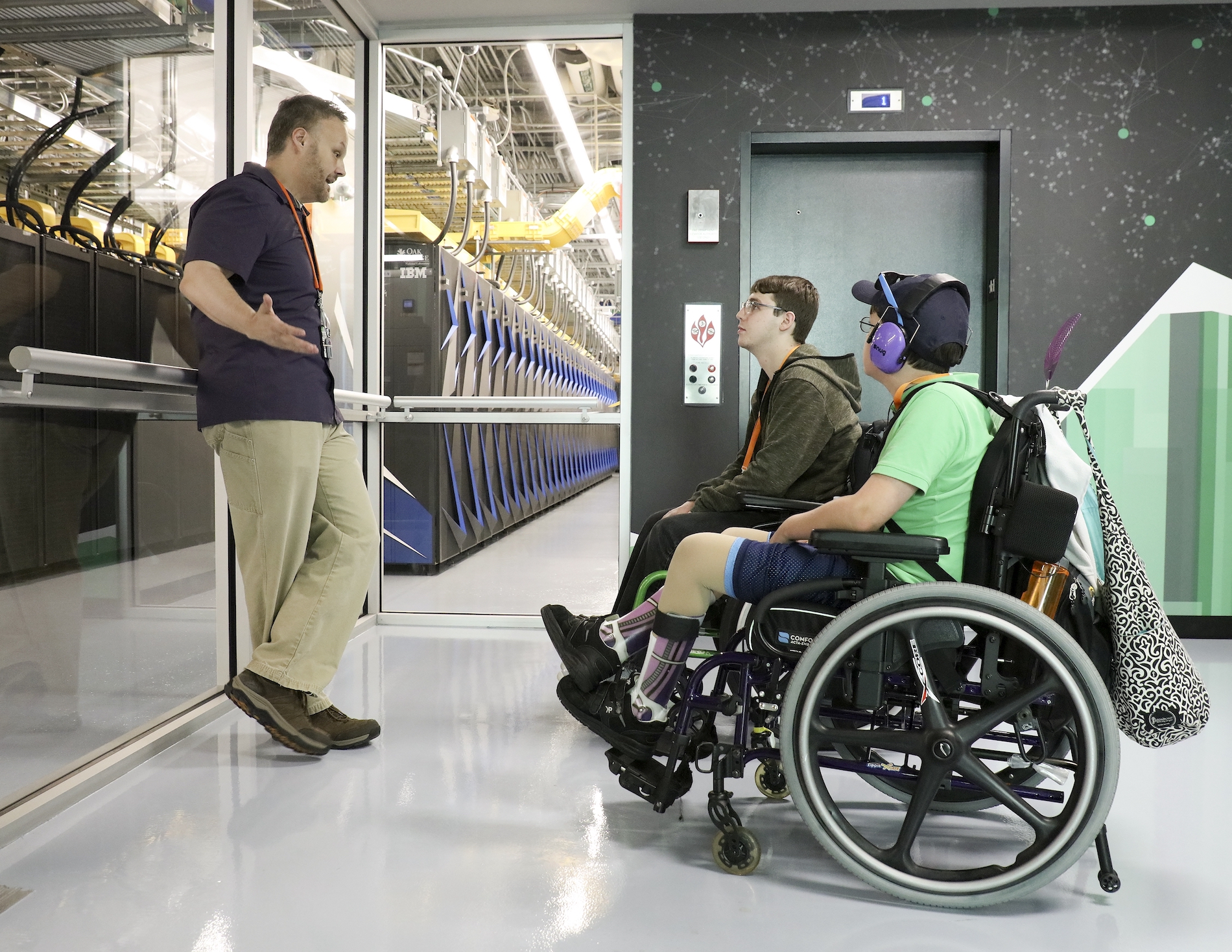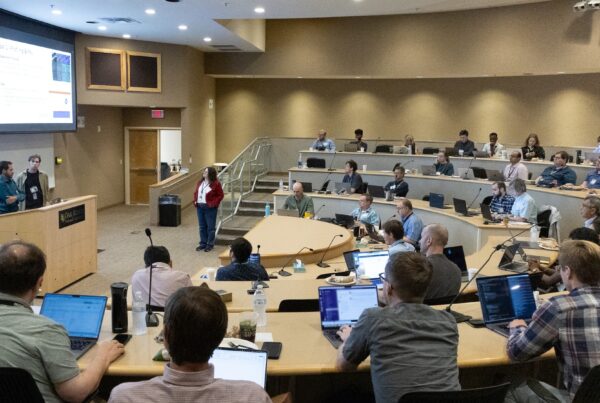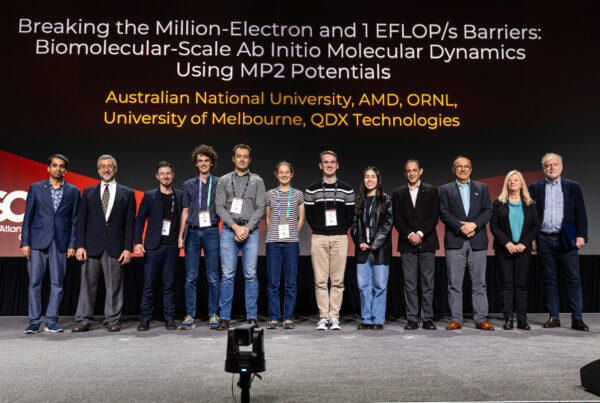Bronson Messer, a computational scientist at the Oak Ridge Leadership Computing Facility (OLCF), gave an invited talk at the American Physical Society’s (APS’s) “Quarks to the Cosmos” April meeting in Denver, detailing his current work on the OLCF’s 200-petaflop IBM AC922 Summit supercomputer.
In the talk, titled “Nuclear Astrophysics Approaching the Exascale: Multi-Physics Simulations of Stellar Explosions and Their Nucleosynthesis,” Messer explained how his team’s work on the GPU-enabled version of the FLASH astrophysics code allowed the group to model hundreds of nuclear species reacting with one another during a star’s explosion and at timescales in the range of hours. FLASH is one of the codes in the Center for Accelerated Application Readiness, an effort to optimize scientific applications for new leadership-class computing systems such as Summit.
“The number of nuclei that we were able to routinely include in one of these nuclear networks on the OLCF’s Titan system was only 13,” Messer said of the center’s Cray XK7 system. “After we modified our code for Summit’s GPUs, we were able to include 231.”
Messer’s team tracks how nuclear burning happens during an explosion of a massive star called a supernova. The explosive start of these events lasts only about a second in real time, but that physical time takes about 3 months to simulate on Titan.
“We really need to model this process out to hours so we can understand how supernova remnants form and evolve. These are the objects we actually observe with telescopes and gamma-ray satellites,” Messer said.
Messer and his team have modeled up to 17 hours of the supernova event—a monumental improvement over the 3 seconds they were previously able to model on Titan. They achieved this by using the larger nuclear composition modules they accelerated for Summit and turning off some computationally intensive physics that becomes less important after the first second.
Messer said the nuclear network module his team accelerated in this work will be used in the ExaStar application within the US Department of Energy’s (DOE’s) Exascale Computing Project, a collaborative effort of DOE’s Office of Science and the National Nuclear Security Administration to deliver a capable exascale computing ecosystem. The OLCF, a DOE Office of Science User Facility located at DOE’s Oak Ridge National Laboratory, is scheduled to deliver an exascale system called Frontier in 2021.

OLCF’s Bronson Messer gave a tour to Noah Caldwell and his brother Seth McDaniel when the Make-A-Wish Foundation granted them a visit last summer.
Messer and the rest of the ExaStar team are currently working on adding new components to ExaStar, including new capabilities for modeling phenomena such as nuclear burning, the transport of neutral subatomic particles called neutrinos, and general relativistic gravity. Eventually the team hopes to perform full simulations of core-collapse supernovae. They also aim to simulate the merging of two neutron stars, a process that forms either a black hole or a hypermassive neutron star that might decay into a black hole.
With ExaStar and systems like Frontier, simulations of such occurrences will, for the first time, be realized with a level of fidelity adequate to compare to observations.
Messer’s talk was part of a session titled “Building the Bridge to Exascale Computing: Applications and Opportunities for Nuclear Physics.” Other session speakers were Saori Pastore, an assistant professor at Washington University in St. Louis, and OLCF user André Walker-Loud of Lawrence Berkeley National Laboratory.
UT-Battelle LLC manages Oak Ridge National Laboratory for DOE’s Office of Science, the single largest supporter of basic research in the physical sciences in the United States. DOE’s Office of Science is working to address some of the most pressing challenges of our time. For more information, please visit https://science.energy.gov.







